Exhibition dates: 18th November, 2021 – 6th February, 2022
I’m not going to say a lot about the work of the Imogen Cunningham because the quality and breadth of the work speaks for itself. If you are attuned you can feel the strength of her images and imbibe of her sensitivity to subject matter, a sense of actual presence in light and form. For example, the portrait of Gertrude Stein, Writer (1934, below) is a masterpiece of light and form and of … perspicacity and intensity.
“An early feminist and inspiration to future generations, Cunningham engaged intensely with pictorialism and modernism, along with portraiture, landscape photography, the nude, still life and street photography… Under appreciated during her life, Cunningham was an inventive, inspired and prolific photographer who tirelessly explored her chosen medium until her death at the age of 93.”1
“Observing that her “taste lay somewhere between reality and dreamland,” Cunningham knew herself and her style well. The reality is the clarity of the images, and the dreamland could be seen in her abstract perspective.”2
I will tell an story though.
“[Ansel] Adams collaborated with Hills Brothers Coffee to have one of his images on the front of the can, which came out in 1968 [see below]. The idea was that the can would be a ‘keepsake’, for it had an original image by Ansel Adams of Yosemite during the winter [Winter Morning, Yosemite Valley, California c. 1940]. Cunningham summed up her disapproval when she sent the can to Ansel potted with a marijuana plant! Although hurtfully honest, Imogen was a tender, emotional woman. When Dorothea Lange’s marriage to Maynard Dixon had come to its end, Imogen burst into tears upon hearing the news.”3
Strength and tenderness. An independent spirit.
Dr Marcus Bunyan
1/ Anonymous. “Sheets ahead: the pioneering photography of Imogen Cunningham – in pictures,” on The Guardian website Wednesday 11 November 2020 [Online] Cited 27/01/2022
2/ Anonymous. “Imogen Cunningham,” on the International Photography Hall of Fame and Museum website Nd [Online] Cited 27/01/2022
3/ Ibid.,
Many thankx to the Seattle Art Museum for allowing me to publish the art work in the posting. Please click on the photographs for a larger version of the image.
Hills Brothers coffee can, with a wraparound image of Adams’ Winter Morning, Yosemite Valley; this can with the rare original red and yellow “belly band” specifying the grind and date, and advertising a Kodak Instamatic II camera on special offer for only $4.75. Tin, 7 inches high and 6 1/4 in diameter (17.8 and 15.9 cm.), with the printed Hills Brothers and Adams credit and the date; with the original plastic top which reads “Head for the HILLS!” 1969
Anonymous text and image from the Swann Auction Galleries website February 26, 2016 [Online] Cited 27/01/2022
“These days, high modernism can sometimes look as distant as a faraway star, a place of heedless optimism and tranquil contemplation. For that very reason, though, the images can be tonic, lowering one’s blood pressure as they induce concentration of sight. Imogen Cunningham took up a camera at the dawn of the 20th century, when few women were working in the field, and made pictures for nearly seven decades. She took every sort of photo; portraits, street scenes and landscapes all figure brilliantly in her body of work. What she did best, though, was to convey the sensual impact of harmonious forms, finding these especially in nudes, both male and female, and in the vegetable kingdom. Imogen Cunningham: A Retrospective, by Paul Martineau, displays her ecstatic studies of flowers – lilies, tuberoses, magnolias – seen in extreme close-up as if they were worlds in themselves, and juxtaposes them with languorous sprawled bodies that become dunes and arroyos. She can turn her eye with similar entrancement to ceramics, textiles, the organically flowing wire sculptures of Ruth Asawa, and even industrial structures. She has never been granted anywhere near the attention accorded her counterpart and contemporary Edward Weston, but revision is clearly in order.”
Luc Sante, The New York Times Book Review 12/1/2020
“‘Cunningham’s decision to become a photographer in the first decade of the 20th century was a daring career choice for a woman,’ says Timothy Potts, director of the J Paul Getty Museum. ‘The field was dominated by men, many of whom saw the complexity and physical demands of the photographic process as beyond the abilities of most women. Armed with intelligence and determination, Cunningham completed her college degree in three years, won a scholarship to study photographic chemistry in Dresden and opened her own portrait studio in Seattle in 1910′”
Text from “Sheets ahead: the pioneering photography of Imogen Cunningham – in pictures,” on the Guardian website Wed 11 Nov 2020 [Online] Cited 08/01/2022
“Cunningham had a peripatetic eye, and this combined with her innate curiosity and forward-thinking attitudes about gender, race and sexuality resulted in an unusually diverse body of work.”
Curator Paul Martineau in the book’s foreword
Imogen Cunningham: A Retrospective | Nov 18 – Feb 6 | Seattle Art Museum
Imogen Cunningham: A Retrospective showcases the endless innovation and profound influence of this remarkable photographer who pushed the boundaries for both women and photography within fine art. Nearly 200 of Cunningham’s insightful portraits, elegant flower and plant studies, poignant street pictures, and groundbreaking nudes present a singular vision developed over seven decades of work. The first major retrospective in the United States of Imogen Cunningham’s work in 35 years, the exhibition examines the artist’s Seattle upbringing and includes works by female artists such as Ruth Asawa and Martha Graham who Cunningham championed, as well as works by Group f/64 which she helped found with Ansel Adams, Edward Weston, and others. Cunningham’s spark of creative possibility asserted photography as a distinct and valuable art form in the 20th century.
This exhibition is organised by the J. Paul Getty Museum, Los Angeles.
Installation view of the exhibition Imogen Cunningham: A Retrospective at the Seattle Art Museum (SAM) showing at left, Magnolia Bud (1929); at second left, Amaryllis (1933); at third left, Agave Design 2 (1920s); and at right, Aloe (1925)
Photo: Natali Wiseman
Installation view of the exhibition Imogen Cunningham: A Retrospective at the Seattle Art Museum (SAM) showing No. 7: Double Image, Sutter St. and Fillmore (c. 1940); 8: Under the Queensboro Bridge, 1934; 9: Sunbonnet Lady, Fillmore Street, San Francisco (c. 1950s); 10: Self-portrait in Copenhagen, 1961; 11: Leni in Chartres, 1960; 14: Reeds, 1952; 15: Me Too, 1955
Photo: Natali Wiseman
Imogen Cunningham (American, 1883-1976)
Self-Portrait with Elgin Marbles, London
1910
Platinum print
6 9/16 × 4 7/8 in.
The J. Paul Getty Museum, Los Angeles
© 2021 The Imogen Cunningham Trust
An early feminist and inspiration to future generations, Cunningham engaged intensely with Pictorialism and Modernism, along with portraiture, landscape photography, the nude, still life and street photography.
Imogen Cunningham (American, 1883-1976)
Self-Portrait
1910
Platinum print
Image: 4 13/16 × 3 1/8 in.
Frame: 20 1/2 x 15 1/2 x 7/8 in.
The J. Paul Getty Museum, Los Angeles
Imogen Cunningham (American, 1883-1976)
The Dream (Nei-san-Koburi)
about 1910
Platinum print
8 15/16 × 6 3/8 in.
The J. Paul Getty Museum, Los Angeles
© 2021 The Imogen Cunningham Trust
“Her first paying photo gig was making lantern slides of microscopic plant details for the university’s botany department. Cunningham also made some of her first creative work while at UW, including a nude self-portrait in the grass on the UW campus that was way ahead of its time (an early hint of the boundary-pushing career that would follow). After interning with and later working for Northwest photographer Edward S. Curtis, in 1910 she established her own studio in a small bungalow on what is now First Hill.”
Margo Vansynghel. “How Seattle’s Imogen Cunningham changed photography forever,” on the Crosscut website November 16, 2021 [Online] Cited 08/01/2022
Imogen Cunningham (American, 1883-1976)
Wood Beyond the World I
1910
Platinum print
Image: 9 7/16 × 6 13/16 in.
Frame: 23 1/4 x 17 1/4 x 7/8 in.
The J. Paul Getty Museum, Los Angeles
Imogen Cunningham (American, 1883-1976)
In the Wood (Voice of the Wood)
1910
Platinum print
Image: 7 13/16 × 7 1/2 in.
Frame: 21 1/4 x 17 1/4 x 7/8 in.
Imogen Cunningham (American, 1883-1976)
Evening on the Duwamish River
About 1911
Platinum print
Image: 5 13/16 × 9 1/2 in.
Mount: 9 5/16 × 12 5/8 in.
Frame: 15 1/2 x 20 1/2 x 7/8 in.
The J. Paul Getty Museum, Los Angeles
Cunningham took this photo of an “Evening on the Duwamish River,” around 1911, after she established her photo studio on Seattle’s First Hill. (The Imogen Cunningham Trust)
Imogen Cunningham: The Dream c. 1910
In this soft-focused black and white photograph, a woman is visible from the waist-up. She sits in three-quarter profile and wears a loose, white robe which emphasises her pale skin. This woman, who glows in contrast to the dark, hazy background which surrounds her, is miniaturist painter Clare Shepard.
Imogen Cunningham photographed her friend, Shepard, at the peak of the Pictorialist movement. This movement saw photographers approach cameras as a tool – similar to a paintbrush – that made an artistic statement. Rather than capturing the real, Pictorialism emphasised the beauty of a subject and an image’s composition.
In this audio recording produced by the J. Paul Getty Museum, Chris Johnson, chair of the photography department at the California College of the Arts, considers the Pictorialist approach Cunningham took in creating The Dream (Nei-san-Koburi) and the romantic feelings it relays.
Transcript
Chris Johnson: It’s a kind of a classic, romantic, Pictorialist image of a young beautiful woman.
Narrator: Chris Johnson, chair of the photography department at the California College of the Arts.
Chris Johnson: You can see that Imogen is very sensitive to the falling of light and shadow over this young woman.
Narrator: The atmosphere around her, seems to glow. Diffused light falls on her headscarf and the folds of her painter’s smock. Her eyes are half closed, as if in a trance. The close framing of the portrait keeps the background abstract. The subject is Clare Shepard, a friend and miniaturist painter.
Chris Johnson: Imogen, in her heart of hearts, was really a romantic and a romantic takes her feelings very seriously so her feelings as she was projecting them on to this young woman are pretty clear.
Narrator: The otherworldly portrait hints at Shepard’s rumoured abilities as a clairvoyant. The image exemplifies Pictorialism, an approach that prioritised beauty and expressiveness, composition and atmospheric effects. The movement rejected the realistic, documentary nature of photography and instead looked to painters as artistic influences.
Chris Johnson: One of the ideas behind the Pictorialists was that you would use the soft-focus technique as a trope to indicate dreamy, romantic, ethereal, spiritual qualities. She’s catching this moment when Claire is lost within thought and it intends to try to draw us into the mood space that she’s occupying using pictorialist soft-focus as a formal strategy.
Narrator: When Cunningham took this portrait around 1910, Pictorialism was at its peak. Cunningham had recently opened her own studio in Seattle after studying photographic chemistry in Germany. The photograph marked a specific, early period in her career.
Chris Johnson: All of her photography subsequent to this phase is in marked contrast to the visual effects of this image.
~ Lily Hansen, SAM Marketing Content Creator, “Imogen Cunningham: The Dream,” on the SAMBlog website December 21, 2021 [Online] Cited 06/01/2022
Imogen Cunningham (American, 1883-1976)
On Mount Rainier
1915
Platinum print
7 1/4 × 9 3/16 in.
The J. Paul Getty Museum, Los Angeles
© 2021 The Imogen Cunningham Trust
With a series of photos of her husband naked “On Mount Rainier,” Imogen Cunningham caused quite the stir in 1915. It was unusual for a woman to be photographing male nudes. (The Imogen Cunningham Trust)
Imogen Cunningham (American, 1883-1976)
On the Mountain
1915
Platinum print
Image: 9 × 7 1/4 in.
Sheldon Museum of Art, University of Nebraska-Lincoln, Anna R. and Frank M. Hall Charitable Trust
Imogen Cunningham (American, 1883-1976)
Agave Design 1
1920s
Gelatin silver print
Image: 13 1/2 × 10 1/2 in.
Mat: 20 × 18 in.
Collection of The Imogen Cunningham Trust
Imogen Cunningham (American, 1883-1976)
Two Callas
1925-1929
Gelatin silver print
11 13/16 × 8 7/8 in.
The Art Institute of Chicago, Julien Levy Collection, Gift of Jean Levy and the Estate of Julien Levy
© 2021 The Imogen Cunningham Trust
Imogen Cunningham (American, 1883-1976)
Magnolia Blossom
Negative 1925; print 1930
Gelatin silver print
9 5/16 × 11 5/8 in.
Fine Arts Museums of San Francisco, Museum purchase, M.H. de Young Memorial Museum
© 2021 The Imogen Cunningham Trust
Imogen Cunningham: Magnolia Blossom 1925
For nearly a decade of her 70-year career, Imogen Cunningham focused on capturing the beauty of botanicals. Having studied chemistry and worked in the botany department at the University of Washington, she wrote her thesis in 1907 on the chemical process of photography while employing a variety of plants as her subjects.
Magnolia Blossom is perhaps Cunningham’s most well-known botanical image. The close-cropped photograph of the flower reveals the cone of stamens and pistils hiding between the petals. Taken as a whole, the image represents a transfixing study of light and shadows within the history of black and white photography.
In this audio recording produced by the J. Paul Getty Museum, Meg Partridge, the granddaughter of Imogen Cunningham, discusses the significance of this photograph within Cunningham’s larger body of work and provides insight on the photographer’s fascination with botanicals.
Transcript
Narrator: This close-cropped image of a magnolia flower fills the entire frame. The petals have completely opened revealing the cone of stamens and curlicue carpels.
Meg Partridge: It’s really a beautifully sharp, focused, large-format image that is a simple subject, but it’s very powerful.
Narrator: For roughly a decade, Cunningham focused her attention on botanical studies. This is perhaps her most well-known example. She had an extensive knowledge of plants – as a chemistry major in college, she worked in the botany department, making slides for lectures and research.
Meg Partridge: She knew the botanical names of all of the plants that she had photographed and all the plants that she gardened with. She spent a good bit of time in the garden. So I think it was more about the relationship she had with her subject – be it a person or a plant – that we really see and respond to.
Narrator: There was a practical aspect to these botanical works as well. Cunningham once explained: “The reason I really turned to plants was because I couldn’t get out of my own backyard when my children were small. I photographed the plants in my garden and steered my children around at the same time.”
Meg Partridge: And she would do it in moments where she had children underfoot, but also a moment to focus. She always used natural light and she often took photographs either inside with a simple backdrop or she even took simple backdrops, a white board or a black cloth, out into the garden to photograph.
Narrator: Cunningham’s full-frame botanicals such as this one were groundbreaking in early modernist photography.
~ Lily Hansen, SAM Marketing Content Creator, “Imogen Cunningham: Magnolia Blossom,” on the SAMBlog website December 7, 2021 [Online] Cited 06/01/2022
Imogen Cunningham (American, 1883-1976)
Magnolia Bud
1929
Gelatin silver print
Image: 9 1/4 × 7 1/16 in.
Mount: 19 7/8 × 14 15/16 in.
George Eastman Museum, purchase
“The photos from this period, often tightly framed to the point of almost cropped, cast off much of Cunningham’s earlier romantic tendencies in favor of a modernist sharpness and chiaroscuro that, while still moody, nears abstraction. The leaves of rubber plants and flax plants become spears, and in close-up, paper-skinned magnolia blossoms almost look like thighs.”
Margo Vansynghel. “How Seattle’s Imogen Cunningham changed photography forever,” on the Crosscut website November 16, 2021 [Online] Cited 08/01/2022
Imogen Cunningham (American, 1883-1976)
Rubber Plant
before 1929
Gelatin silver print
13 3/8 x 10 1/4 in. (34 x 26cm)
Seattle Art Museum, Gift of John H. Hauberg
Imogen Cunningham (American, 1883-1976)
Aloe
1925
Gelatin silver print
8 13/16 × 6 1/2 in.
The J. Paul Getty Museum, Los Angeles
© The 2021 Imogen Cunningham Trust
Cunningham started photographing plants upon moving to the Bay Area from Seattle. “The reason I really turned to plants was because I couldn’t get out of my own backyard when my children were small,” Cunningham later said. (The Imogen Cunningham Trust)
Imogen Cunningham (American, 1883-1976)
Banana Plant
1925-1929
Gelatin silver print
Image: 11 5/8 × 8 3/4 in.
Sheet: 14 × 10 15/16 in.
The Art Institute of Chicago, Julien Levy Collection, Gift of Jean Levy and the Estate of Julien Levy
Imogen Cunningham (American, 1883-1976)
Billbergia
1929
Gelatin silver print
Image: 12 1/8 × 8 1/16 in.
Sheet: 13 7/8 × 10 15/16 in.
The Art Institute of Chicago, Julien Levy Collection, Gift of Jean Levy and the Estate of Julien Levy
Imogen Cunningham (American, 1883-1976)
Tuberose
1920s
Gelatin silver print
Image: 8 3/8 × 9 3/8 in.
Lent by The Metropolitan Museum of Art, Purchase, Dorothy Levitt Beskind Gift, 1973
Imogen Cunningham (American, 1883-1976)
Hen and Chickens
1929
Gelatin silver print
9 15/16 × 9 11/16 in.
The J. Paul Getty Museum, Los Angeles
© 2021 The Imogen Cunningham Trust
The Seattle Art Museum (SAM) presents Imogen Cunningham: A Retrospective (November 18, 2021 – February 6, 2022), the photographer’s first major retrospective in the United States in more than 35 years. Organised by the J. Paul Getty Museum, Los Angeles, the exhibition is a visual celebration of Cunningham’s immense contribution to the history of 20th-century photography. It features nearly 200 works from her seventy-year career, including portraits of artists, musicians and Hollywood stars; elegant flower and plant studies; poignant street pictures; and groundbreaking nudes.
“We are thrilled to open this important retrospective here in Seattle, Cunningham’s first home as an artist,” says Amada Cruz, SAM’s Illsley Ball Nordstrom Director and CEO. “She once said that she ‘photographs anything the light touches’ – this is an extraordinary opportunity for our visitors to bask in the glow of her dynamic and expansive body of work and be inspired.”
“Imogen Cunningham was under appreciated for most of her career, only finding recognition in her last years – an unfortunately common tale for many women artists,” says Carrie Dedon, SAM’s Associate Curator of Modern and Contemporary Art. “Her photographs reveal an endlessly curious, innovative, and determined mind that places her as one of the most important photographers of the last century.”
Beginnings in Seattle
Imogen Cunningham (1883-1976) had deep connections to the Pacific Northwest; born in Portland, she grew up in Port Angeles and Seattle. The precocious child of a free-thinking father, Cunningham decided to become a photographer around 1901, while still in high school. Her father famously asked, “Why do you want to become a dirty photographer?” Yet he built her a darkroom in a woodshed, including the necessary and messy chemical supplies. Her first works were in the soft-focus, Pictorialist style.
Cunningham completed a chemistry degree at the University of Washington in 1907. During these years, she also participated in the artistic scene, becoming the youngest charter member – and only photographer – of the Seattle Fine Arts Society in 1908. She also apprenticed and then worked from 1907-1909 at the Seattle studio of well-known photographer Edward S. Curtis. After a year-long fellowship in Dresden, Germany, Cunningham returned to Seattle in 1910 and opened what is considered the first studio for artistic photography in Seattle. She lived and worked in this ivy-covered building located at 1117 Terry Avenue, making portraits of local figures as well as her own works in the then-popular Pictorialist mode, including some early daring nudes.
Cunningham married a Seattle artist, Roi Partridge, in 1915, and eventually had three sons with him, including twin boys. With her husband on the road, Cunningham struggled to run her studio and household, and eventually set out to join Partridge in San Francisco in 1917.
A Modernist Pioneer
The next decade of Cunningham’s life saw her balancing her roles as an artist, mother, and mentor to the students of Mills College in Oakland, where her husband taught. Amid the very real constraints of her life in California, Cunningham created photographs that are regarded today as historically radical and groundbreaking, including modernist botanicals and portraits.
Bound to the home while caring for her infant boys, Cunningham planted a garden in 1921 to create subjects for her camera. In these works, including perhaps her more celebrated botanical, Magnolia Blossom (1925), she isolates the plant forms, precisely revealing their essential elements in close-up compositions. Their sensuality is heightened by Cunningham’s choice of warm-toned matte-surface papers for printing. These works were included in a momentous avant-garde exhibition in 1925 in Stuttgart, Germany, which brought her international attention.
Her portrait subjects in these years featured people from her artistic community such as dancers Jose Limon and Hanya Holm, musicians from the Cornish College of the Arts, fencer Helene Mayer, and artists Frida Kahlo and Morris Graves. She also made portraits of Hollywood luminaries for Vanity Fair, including Cary Grant, Joan Blondell, and Spencer Tracy.
Artist and collaborator
SAM’s iteration of the exhibition highlights Cunningham’s collaborations with artists of many mediums, particularly dancer Martha Graham and sculptor Ruth Asawa. In a section of artist portraits is one of Graham, taken during a 1931 session that resulted in dramatic close-ups of the dancer’s face and body; also in this section is a video of the dancer in her iconic solo Lamentation (1930). Cunningham was introduced to Asawa in 1950, and the two, though 43 years apart in age, established a lasting friendship. Cunningham regularly photographed Asawa and her looped wire sculptures and wrote on her behalf for a Guggenheim Foundation grant. The exhibition features seven Asawa sculptures alongside Cunningham’s five portraits of the artist and her work.
Another section of the exhibition features examples from Group f/64, a Bay Area association of photographers begun in 1932 that championed a direct and objective approach. In addition to Cunningham, the group included Edward Weston, Ansel Adams, Sonya Noskowiak, and more. Also on view are photographs by Gertrude Kasebier, Dorothea Lange, Listette Model, and more; they were all sources of inspiration for or collaborators with Cunningham.
The Light Within
The exhibition also explores the last 42 years of Cunningham’s life, as the artist continued to face challenges and late-in-life triumphs in her career. It was only in the final twelve years of her life that she finally began to receive attention, with major solo shows in New York, Chicago, and San Francisco; a 1964 Aperture monograph spearheaded by her champion and fellow photographer, Minor White; and a 1970 Guggenheim Foundation grant that enabled her to print a cache of her early glass plate negatives.
During these years, she continued to innovate, gravitating toward street photography and creating cleverly composed examples of the genre. She also taught and mentored young artists, and she became involved in civic issues in San Francisco, as well as the civil rights and the anti-war movements. At the age of 92, she embarked on a final series focusing on ageing, traveling with an assistant to document subjects. In 1976, just months before her death, she appeared on the Tonight Show with Johnny Carson, charming the host and the audience. On view in this final gallery is Portrait of Imogen (1988), a short documentary film directed by Meg Partridge.
Press release from SAM
Portrait of Imogen – Part 1
Portrait of Imogen – Part 2
Imogen Cunningham (American, 1883-1976)
Shredded Wheat Tower
1928
Gelatin silver print
Image: 8 7/8 × 6 9/16 in.
Lent by The Metropolitan Museum of Art, Ford Motor Company Collection, Gift of Ford Motor Company and John C. Waddell, 1987
Radiating outward, the beams of this water tower unfold as if in bloom. Imogen Cunningham is best known for her floral studies, which monumentalise the intricate architecture of petals and leaves. Here, she turns her signature subject on its head, finding organic elegance in an industrial view. Cunningham exhibited this photograph at the landmark 1929 Film und Foto exhibition in Stuttgart, and its inverted viewpoint reflects the influence of the show’s avant-garde organisers. Pioneering a new West Coast modernism, Cunningham adapted European approaches to the California skyline, here depicting a Shredded Wheat factory near her home in Oakland.
Text from the Metropolitan Museum of Art website
Imogen Cunningham (American, 1883-1976)
Dancer, Mills College
1929
Gelatin silver print
8 9/16 × 7 3/8 in.
The J. Paul Getty Museum, Los Angeles
© 2021 The Imogen Cunningham Trust
Imogen Cunningham (American, 1883-1976)
Martha Graham, Dancer
1931
Gelatin silver print
7 5/16 × 9 15/16 in.
The J. Paul Getty Museum, Los Angeles, Gift of Daniel Greenberg and Susan Steinhauser
© 2021 The Imogen Cunningham Trust
Martha Graham (May 11, 1894 – April 1, 1991) was an American modern dancer and choreographer. Her style, the Graham technique, reshaped American dance and is still taught worldwide.
Graham danced and taught for over seventy years. She was the first dancer to perform at the White House, travel abroad as a cultural ambassador, and receive the highest civilian award of the US: the Presidential Medal of Freedom with Distinction. In her lifetime she received honours ranging from the Key to the City of Paris to Japan’s Imperial Order of the Precious Crown. She said, in the 1994 documentary The Dancer Revealed: “I have spent all my life with dance and being a dancer. It’s permitting life to use you in a very intense way. Sometimes it is not pleasant. Sometimes it is fearful. But nevertheless it is inevitable.” Founded in 1926 (the same year as Graham’s professional dance company), the Martha Graham School is the oldest school of dance in the United States. First located in a small studio within Carnegie Hall the school currently has two different studios in New York City.
Text and more information on the Wikipedia website
Imogen Cunningham (American, 1883-1976)
Self-Portrait with Korona View
1933
Gelatin silver print
4 × 3 5/16 in.
Collection of The Imogen Cunningham Trust
© 2021 The Imogen Cunningham Trust
Imogen Cunningham (American, 1883-1976)
Under the Queensboro Bridge
1934
Gelatin silver print
Image: 6 1/8 × 7 5/8 in.
Frame: 15 1/4 x 20 1/4 x 3/4 in.
The J. Paul Getty Museum, Los Angeles, Gift of Leslie and Judith Schreyer and Gabri Schreyer-Hoffman in honour of Virginia Heckert
Imogen Cunningham (American, 1883-1976)
Gertrude Stein, Writer
1934
Gelatin silver print
Image: 7 9/16 × 6 11/16 in.
Frame: 22 5/8 x 16 5/8 x 1 3/8 in.
The J. Paul Getty Museum, Los Angeles
Imogen Cunningham (American, 1883-1976)
Cornish School Trio 2
1935
Gelatin silver print
9 × 7 1/2 in.
Collection of The Imogen Cunningham Trust
© 2021 The Imogen Cunningham Trust
About the exhibition
Imogen Cunningham (1883-1976) had deep connections to the Pacific Northwest; born in Portland, she grew up in Port Angeles and Seattle. She completed a chemistry degree at the University of Washington in 1907 and in 1910 opened what is considered the first studio for artistic photography in Seattle, making portraits of local figures as well as her own works in the then-popular Pictorialist mode, including some early daring nudes.
Cunningham then moved to California, where she created photographs that are regarded today as historically radical and groundbreaking, including modernist botanicals and portraits. She began to earn international attention, and created portraits of people from her artistic community as well as celebrities including artist Frida Kahlo and actor Cary Grant.
SAM’s iteration of the exhibition highlights Cunningham’s collaborations with artists of many mediums, particularly dancer Martha Graham and sculptor Ruth Asawa. Another section of the exhibition features examples from the famous Group f/64, including Edward Weston and Ansel Adams.
The exhibition also explores the last 42 years of Cunningham’s life, as the artist continued to face challenges and late-in-life triumphs in her career. She created clever examples of street photography, taught and mentored young artists, and embarked on a final important series on ageing. Visitors can also watch Portrait of Imogen (1988), a short documentary film directed by Meg Partridge.
Text from SAM
Imogen Cunningham (American, 1883-1976)
Mr. and Mrs. Ozenfant
1935
Gelatin silver print
Image: 9 3/8 × 7 1/4 in.
Frame: 23 1/4 x 17 1/4 in.
The J. Paul Getty Museum, Los Angeles
Imogen Cunningham (American, 1883-1976)
My Father at Ninety
1936
Gelatin silver print
9 3/4 × 7 11/16 in.
The J. Paul Getty Museum, Los Angeles
© 2021 The Imogen Cunningham Trust
Imogen Cunningham: My Father at Ninety, 1936
Around 1901, Imogen Cunningham purchased her first camera. Aware of his daughter’s interest in photography, Cunningham’s father, Isaac Burns Cunningham, built her a darkroom in a woodshed on their property in Seattle. With her photography career in full bloom, Cunningham returned to the site of the original darkroom more than 30 years later to photograph her first and biggest supporter, her father.
Seated on a log in front of split wood, Cunningham intimately captures her ageing father. In this recording produced by the J. Paul Getty Museum, Meg Partridge, the granddaughter of Imogen Cunningham, reflects on Cunningham’s loving relationship with her father and reveals the supportive role he played throughout her career.
Transcript
Meg Partridge: In all the photographs Imogen took of her father, you can just see that relationship between the two. You experienced that relationship a bit when you look into the eyes of Isaac Burns in this photograph.
Narrator: Cunningham had a host of ways for getting her subjects to relax and reveal a bit of themselves. She’d chat them up, catch them off guard, or mesmerise them with her own fluid, busy movement, all in order to, as she once said, “gain an understanding at short notice and at close range.” But with this sitter, those techniques weren’t necessary. Her father’s guard was never up.
Meg Partridge: Imogen was very close to her father. I think there was a real similar interest in their curiosity and their intellect and their pursuit of information.
Narrator: Isaac Burns Cunningham was a freethinker. His formal education was interrupted by the Civil War, yet he was a voracious reader and a student of all religions. He supported his large family with a wood and coal supply business. In his daughter, named for the Shakespearian character he found most noble, he nurtured a love of nature and art, buying her first set of watercolours and arranging painting lessons on weekends and summers.
Meg Partridge: This is from a very low-income, frugal family that didn’t have a lot of extra money to spare. Isaac Burns also made her a darkroom in his woodshed. So that’s how Imogen got started actually processing her own work as a teenager in Seattle.
Narrator: Like her father, Imogen Cunningham lived into her nineties. When asked in an interview two months before her death at age ninety-three which one of her photographs was her favourite, she replied, “The one I’m going to take tomorrow.”
~ Lily Hansen, SAM Marketing Content Creator, “Imogen Cunningham: My Father at Ninety,” on the SAMBlog website December 28, 2021 [Online] Cited 06/01/2022
Imogen Cunningham (American, 1883-1976)
Double Image, Sutter St. and Fillmore
c. 1940
Gelatin silver print
7 3/4 × 7 1/2 in.
Collection of the Oakland Museum of California, Gift of the Junior League of Oakland
© 2021 The Imogen Cunningham Trust
Imogen Cunningham (American, 1883-1976)
Hand Weaving with Hand, Henning Watterson, Weaver
1946
Gelatin silver print
Image: 13 3/16 × 9 3/8 in.
Mount: 13 7/8 × 10 15/16 in.
Frame: 22 /8 x 18 5/8 x 1 3/8 in.
The J. Paul Getty Museum, Los Angeles, Gift of Daniel Greenberg and Susan Steinhauser
“Whenever I photographed anybody who does anything with his hands,” Cunningham once said, “I usually come down and focus on them, and do the hand.”
Imogen Cunningham (American, 1883-1976)
Morris Graves, Painter
1950
Gelatin silver print
15 × 16 in.
Sheldon Museum of Art, University of Nebraska-Lincoln, Anna R. and Frank M. Hall Charitable Trust
© 2021 The Imogen Cunningham Trust
Morris Graves (August 28, 1910 – May 5, 2001) was an American painter. He was one of the earliest Modern artists from the Pacific Northwest to achieve national and international acclaim. His style, referred to by some reviewers as Mysticism, used the muted tones of the Northwest environment, Asian aesthetics and philosophy, and a personal iconography of birds, flowers, chalices, and other images to explore the nature of consciousness.
An article in a 1953 issue of Life magazine cemented Graves’ reputation as a major figure of the ‘Northwest School’ of artists. He lived and worked mostly in Western Washington, but spent considerable time traveling and living in Europe and Asia, and spent the last several years of his life in Loleta, California.
Text and more information on the Wikipedia website
Imogen Cunningham: Morris Graves In His Leek Garden 1973
From close friends to strangers, and even the artist herself, photographer Imogen Cunningham found inspiration in capturing the human form in various settings. Taking portraits of those around her, Cunningham aimed to find the “beauty of the inner self.”
Listen to this audio interview to hear Japanese and Chinese Canadian photographer Kayla Isomura discuss the lessons she has learned from Cunningham’s extensive body of work. Paying particular attention to the artist’s 1973 portrait, Morris Graves In His Leek Garden, Isomura highlights the intentional melancholy of the image and shares admiration for Cunningham’s keen ability to capture her subjects in their natural state.
Transcript
Narrator: Like Imogen Cunningham, photographer Kayla Isomura is known for her portraits.
Kayla Isomura: I am a fourth-generation Japanese and Chinese Canadian, with a background as well in journalism, all of which have influenced my interest in multimedia storytelling.
Narrator: Kayla identifies with Cunningham’s goal of finding the “beauty of the inner self” in her portraits. Here, Kayla notes Cunningham’s deft touch with her subject, the painter Morris Graves.
Kayla Isomura: For me, I really like capturing people kind of as they are. Even taking a photo on the spot. Sometimes people will feel self-conscious about that. But more often than not I’m taking a photo of them because there is something about them that is photogenic even if it might not be in the sort of what society might expect. It’s very important that anybody can feel comfortable in front of the camera, or anybody can feel like they’re able to see themself in a photograph.
Narrator: Twenty-three years after Cunningham first photographed her friend Graves, she received a somewhat concerning letter from him. In addition to asking if she would once again take his portrait, Graves wrote, “Like us all, I am undergoing changes that are beyond my comprehension. I am tired of life, and I understand less and less.” Soon after, Cunningham visited Graves at his retreat, a 380-acre property in Loleta, California, where she took this photo.
Kayla Isomura: Something that really stood out to me is how authentic I guess in a way that I feel like this image was captured. Looking at how the photo was taken through the leeks and the contemplative expression on his face, it made me feel like there was more to this too. Like I didn’t know if there’s a sense of even mourning or even loss or maybe he’s just kind of lost in thought in his garden.
Narrator: After developing her photographs, Cunningham sent them to Graves along with her own letter, complimenting his “aura of beauty” and hoping that her portrait would inspire him to paint again.
~ Lily Hansen, SAM Marketing Content Creator, “Imogen Cunningham: Morris Graves In His Leek Garden,” on the SAMBlog website November 30, 2021 [Online] Cited 06/01/2022
Imogen Cunningham (American, 1883-1976)
Sunbonnet Lady, Fillmore Street, San Francisco
c. 1950s
Gelatin silver print
8 3/4 x 7 1/2 in. (22.2 x 19.1cm)
Seattle Art Museum, Gift of John H. Hauberg
“I don’t hunt for anything. I don’t hunt for things – I just wait until something strikes me,” Cunningham said. “Of course, I hunt for an expression when I’m trying to photograph people.”
Imogen Cunningham (American, 1883-1976)
Reeds
1952
Gelatin silver print
Image: 6 13/16 × 8 3/4 in.
Mount: 12 3/16 × 13 in.
Frame: 20 5/8 x 16 5/8 x 1 3/8 in.
The J. Paul Getty Museum, Los Angeles
Imogen Cunningham (American, 1883-1976)
The Beach, San Francisco
About 1955
Gelatin silver print
Image: 9 15/16 × 10 1/16 in.
Sheet: 11 7/16 × 10 7/8 in.
George Eastman Museum, museum accession
Imogen Cunningham (American, 1883-1976)
In Trinity Churchyard, No. 2, New York
1956
Gelatin silver print
7 1/2 x 7 3/8 in. (19.1 x 18.7cm)
Seattle Art Museum, Gift of John H. Hauberg
Imogen Cunningham (American, 1883-1976)
Morris Graves in His Leek Garden
1973
Gelatin silver print
8 1/4 x 11 3/16 in.
Seattle Art Museum, Gift of John H. Hauberg
In 1973, at ninety years old, Cunningham traveled to Loleta, California, to photograph Morris Graves in his leek garden. (The Imogen Cunningham Trust)
Imogen Cunningham (American, 1883-1976)
Ruth Asawa, Sculptor
1952
Sepia toned gelatin silver print
9 1/2 × 7 1/2 in.
Fine Arts Museums of San Francisco, Gift of Ruth Asawa and Albert Lanier
© 2021 The Imogen Cunningham Trust
Photo: Randy Dodson
Ruth Aiko Asawa (January 24, 1926 – August 5, 2013) was an American modernist sculptor. Her work is featured in collections at the Solomon R. Guggenheim Museum and the Whitney Museum of American Art in New York City. Fifteen of Asawa’s wire sculptures are on permanent display in the tower of San Francisco’s de Young Museum in Golden Gate Park, and several of her fountains are located in public places in San Francisco. She was an arts education advocate and the driving force behind the creation of the San Francisco School of the Arts, which was renamed the Ruth Asawa San Francisco School of the Arts in 2010. In 2020, the U.S. Postal Service honoured her work by producing a series of ten stamps that commemorate her well-known wire sculptures.
Text and more information on the Wikipedia website
Imogen Cunningham (American, 1883-1976)
Ruth Asawa Family and Sculpture
1957
Gelatin silver print
10 3/8 x 10 3/8 in. (26.4 x 26.4cm)
Seattle Art Museum, Gift of John H. Hauberg
Cunningham struck up a friendship with Japanese American visual artist Ruth Asawa and took a keen interest in Asawa’s strong but delicate wire sculptures, some of which are included in the Seattle Art Museum exhibit. (The Cunningham Trust)
Imogen Cunningham (American, 1883-1976)
Self-Portrait with Grandchildren in Funhouse
1955
Gelatin silver print
8 3/4 × 7 5/16 in.
The J. Paul Getty Museum, Los Angeles
© 2021 The Imogen Cunningham Trust
Imogen Cunningham: Self-Portrait with Grandchildren in Funhouse 1955
In Self-Portrait with Grandchildren in Funhouse, Imogen Cunningham captures a moment of joy with two of her young grandchildren, Joan and Loren, as they experiment with the effects of a warped mirror. Despite the playful nature of the image, Cunningham remains stoic in photographing herself. Her face points down as she looks into the viewfinder of her black and silver-lined rectangular camera which she steadies with both hands. She is small in comparison to her grandchildren, whose elongated arms stretch the entirety of the image, but identifiable by her white hair, gemmed cap, and metallic glasses.
Tune in to this audio recording to hear Imogen Cunningham’s granddaughter, Meg Partridge, discuss Cunningham’s relationship with her grandchildren. Produced by the J. Paul Getty Museum, Partridge describes how this image came together and emphasises Cunningham’s signature artistic style.
Transcript
Narrator: An outing with two of her granddaughters and a fun house mirror provided Imogen Cunningham with an irresistible subject. Meg Partridge, granddaughter of Imogen Cunningham.
Meg Partridge: Imogen was really being very playful as she always was with photography.
Narrator: Partridge was only two when this photograph was taken, and too young to tag along. Instead, we see her older sister Joan, in the middle with both hands raised, and her cousin Loren, on the right with a hyper-elongated arm.
Meg Partridge: Imogen did not spend a lot of time taking grandchildren places and doing grandmotherly-like things. She enjoyed children once they became, as I would say, of interest to her. They could be articulate. They could have opinions. They could share thoughts.
Narrator: Cunningham worked while raising her three sons, and continued to do so once their children came along.
Meg Partridge: Looking at her work, you can see some of the same subjects coming in again and again. So we see many photographs of Imogen looking into her camera and photographing herself in a reflection or often in a shadow as well. But another is a very sort of surrealistic view that she took with her camera.
Narrator: Unlike the distorted versions of her granddaughters, her reflection in the self-portrait remains relatively true. We get just a glimpse of her grey hair beneath an embroidered cap and one-half of her eyeglasses, as her hands adjust the dials on her ever-present Rolleiflex camera.
Meg Partridge: She was able to capture great shots that were unexpected because she had a camera around her neck and she just always wore it.
~ Lily Hansen, SAM Marketing Content Creator, “Imogen Cunningham: Self-Portrait with Grandchildren in Funhouse,” on the SAMBlog website January 4, 2022 [Online] Cited 06/01/2022
Imogen Cunningham (American, 1883-1976)
Jump Rope, New York
1956
Gelatin silver print
7 1/2 x 7 3/8 in.
Seattle Art Museum, Gift of John H. Hauberg
© 2021 The Imogen Cunningham Trust
Imogen Cunningham (American, 1883-1976)
The Unmade Bed
1957
Gelatin silver print
10 11/16 × 13 1/2 in.
The J. Paul Getty Museum, Los Angeles, Gift of Daniel Greenberg and Susan Steinhauser
© 2021 The Imogen Cunningham Trust
Imogen Cunningham: The Unmade Bed 1957
While teaching at the California School of Fine Arts in 1957, Imogen Cunningham overheard her friend and co-worker Dorothea Lange give her students an assignment: photograph something you use every 24 hours. Inspired by the simple prompt, Cunningham returned to class the next week with a new photograph she had taken titled The Unmade Bed.
Listen to an interpretive analysis of the work from Cunningham’s close friend and collaborator Judy Dater. From the perfectly rumpled sheets to the spread out piles of bobby pins, Dater discusses how this image acts as a self-portrait of the artist and explains the reason why Cunningham often gifted a print of this image to newlyweds.
Transcript
Narrator: A rumpled sheet and blanket are thrown back to reveal a pile of hairpins and another of bobby pins. Subtle gradations vary from the crisp white sheets exposed by sunlight, to the grey wool blanket with a shimmery trim, to the completely dark background.
Judy Dater: I can’t look at that photograph and not think of it as a self-portrait, a very personal self-portrait.
Narrator: In 1957, Dorothea Lange, best known for documenting the Great Depression, was teaching at the California School of Fine Arts, now the San Francisco Art Institute. Cunningham was also teaching there when she heard her friend and fellow photographer give her students an intriguing assignment.
Judy Dater: And the assignment that, apparently, that Dorothea Lange, gave the class that day was to go home and photograph something you use every twenty-four hours. And so Imogen went home and made that particular photograph. And then when she came back the following week, she brought that in as her example.
Narrator: Did she intend it as a self-portrait? After all, those are her hair pins. Do they signify the letting down of one’s hair or one’s guard? Cunningham never said as much, but she did ascribe one message to the image.
Judy Dater: She sometimes would give that photograph to people as a wedding present so that the husband would know that the wife was going to be busy, that she had things to do, and not to expect the bed to always be made.
Narrator: Cunningham may have deliberately arranged the sheets and hairpins, or perhaps she happened upon the unmade bed exactly as she left it. For photographer Judy Dater, that’s irrelevant.
Judy Dater: She saw it and she was at the right angle at the right moment, and she knew what to do with it.
~ Lily Hansen, SAM Marketing Content Creator, “Imogen Cunningham: The Unmade Bed,” on the SAMBlog website December 14, 2021 [Online] Cited 06/01/2022
Imogen Cunningham (American, 1883-1976)
Self-Portrait on Geary Street
1958
Gelatin silver print
9 3/16 × 6 7/8 in.
The J. Paul Getty Museum, Los Angeles, Gift of Daniel Greenberg and Susan Steinhauser
© 2021 The Imogen Cunningham Trust
Imogen Cunningham (American, 1883-1976)
Stan, San Francisco
1959
Gelatin silver print
9 1/2 × 7 1/16 in.
Collection of The Imogen Cunningham Trust
© 2021 The Imogen Cunningham Trust
Imogen Cunningham (American, 1883-1976)
Cemetery In France
1960
Gelatin silver print
8 1/2 x 7 1/4 in. (21.6 x 18.4cm)
Gift of John H. Hauberg
Imogen Cunningham (American, 1883-1976)
Minor White, Photographer
1963
Gelatin silver print
Image: 7 5/16 × 7 5/16 in.
Mat: 17 11/16 × 14 in.
Frame: 20 1/2 x 15 1/2 x 7/8 in.
The J. Paul Getty Museum, Los Angeles
Imogen Cunningham (American, 1883-1976)
Humboldt
1968
Gelatin silver print
Image: 7 3/4 × 7 11/16 in.
Mat: 18 × 14 in.
Collection of The Imogen Cunningham Trust
Imogen Cunningham (American, 1883-1976)
Chris Through the Curtain
1972
Gelatin silver print
Image: 9 13/16 × 6 11/16 in.
Mat: 18 × 14 in.
Collection of The Imogen Cunningham Trust
Imogen Cunningham (American, 1883-1976)
Pentimento
1973
Gelatin silver print
Image: 7 3/16 × 8 13/16 in.
Mount: 14 1/2 × 14 7/16 in.
Frame: 16 5/8 x 22 5/8 x 1 3/8 in.
The J. Paul Getty Museum, Los Angeles, Gift of Daniel Greenberg and Susan Steinhauser
Imogen Cunningham (American, 1883-1976)
Another Arm
1973
Gelatin silver print
9 1/8 × 7 1/2 in.
Collection of The Imogen Cunningham Trust
© 2021 The Imogen Cunningham Trust
Through the final years of her life, Cunningham would continue to do street photography. She took this photo of “Another Arm” in 1973, three years before she passed away. (The Imogen Cunningham Trust)
Judy Dater (American, b. 1941)
Imogen and Twinka at Yosemite
1974
Gelatin silver print
Image: 9 1/2 × 7 1/2 in.
Mount: 17 15/16 × 14 in.
Frame: 22 5/8 x 16 5/8 x 1 3/8 in.
The J. Paul Getty Museum, Los Angeles, Gift of Jack von Euw
Seattle Art Museum Downtown
1300 First Avenue
, Seattle, WA 98101-2003
206.654.3100
TTY 206.654.3137
Opening hours:
Wednesday – Sunday 10am – 5pm
Closed Monday and Tuesday



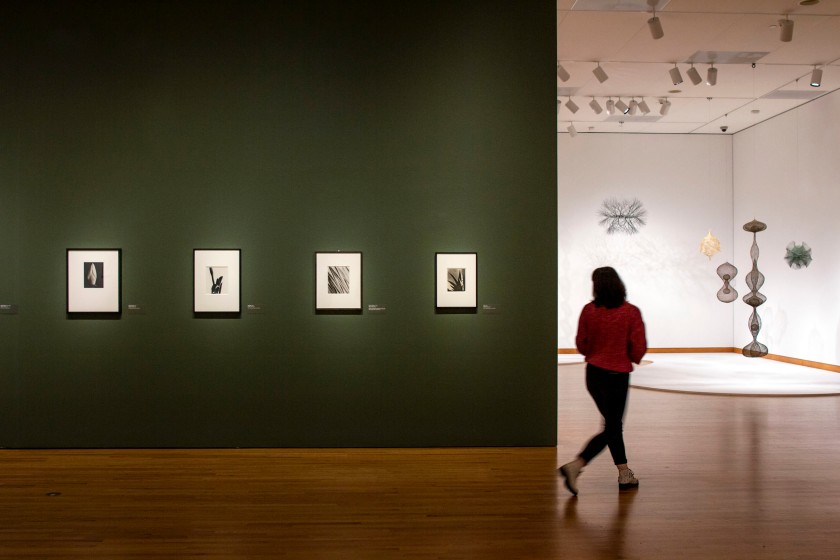
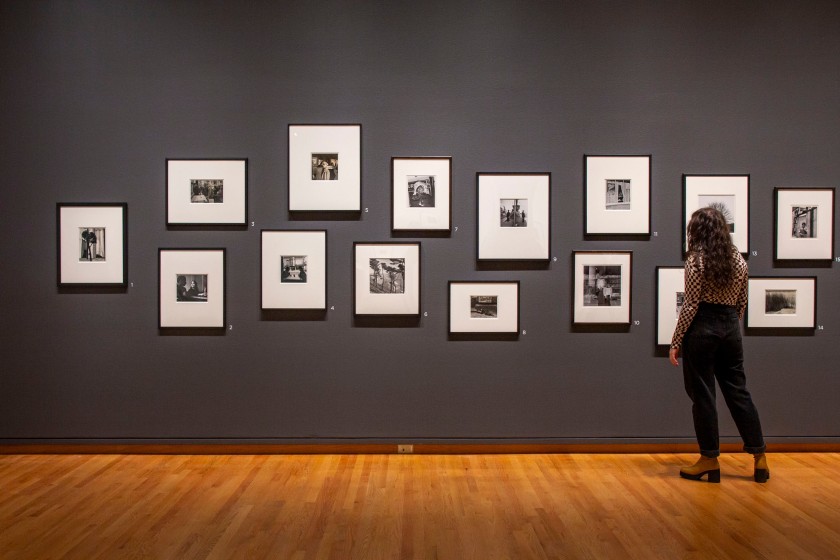

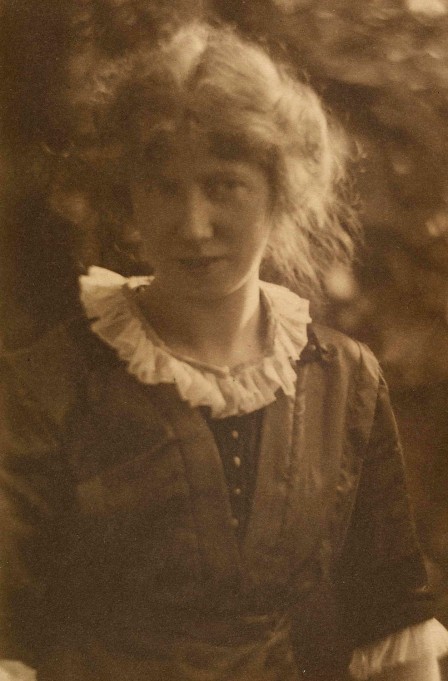

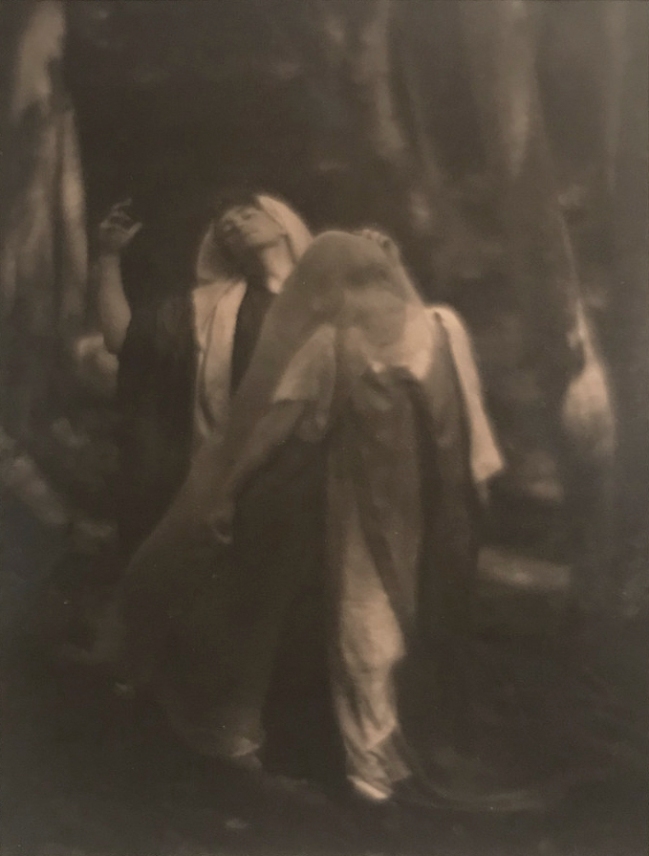




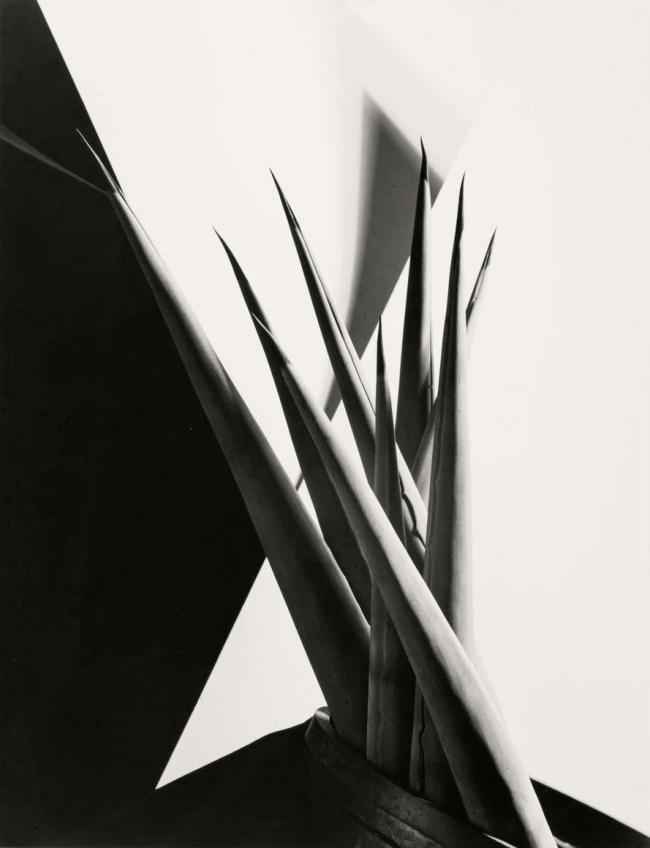
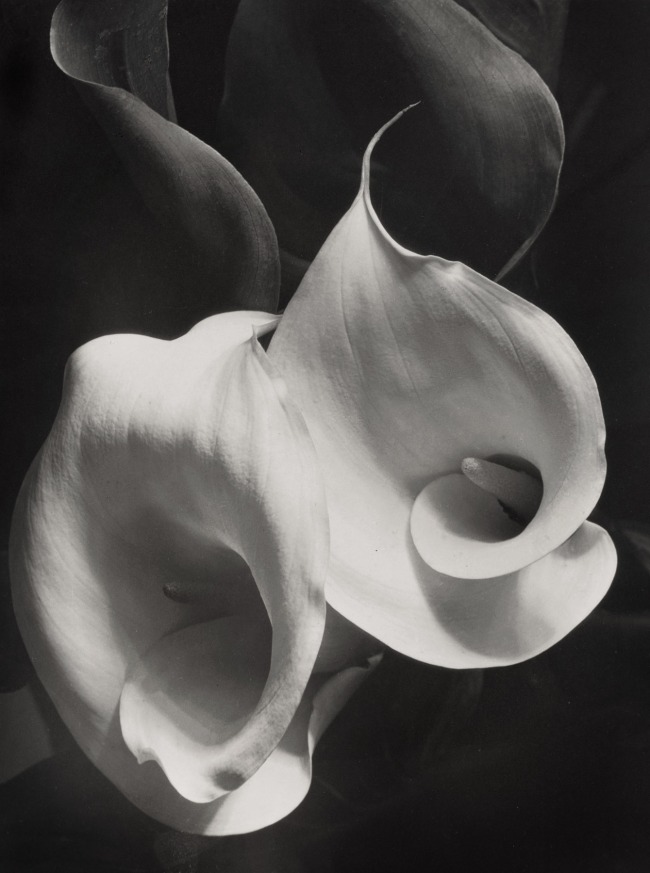





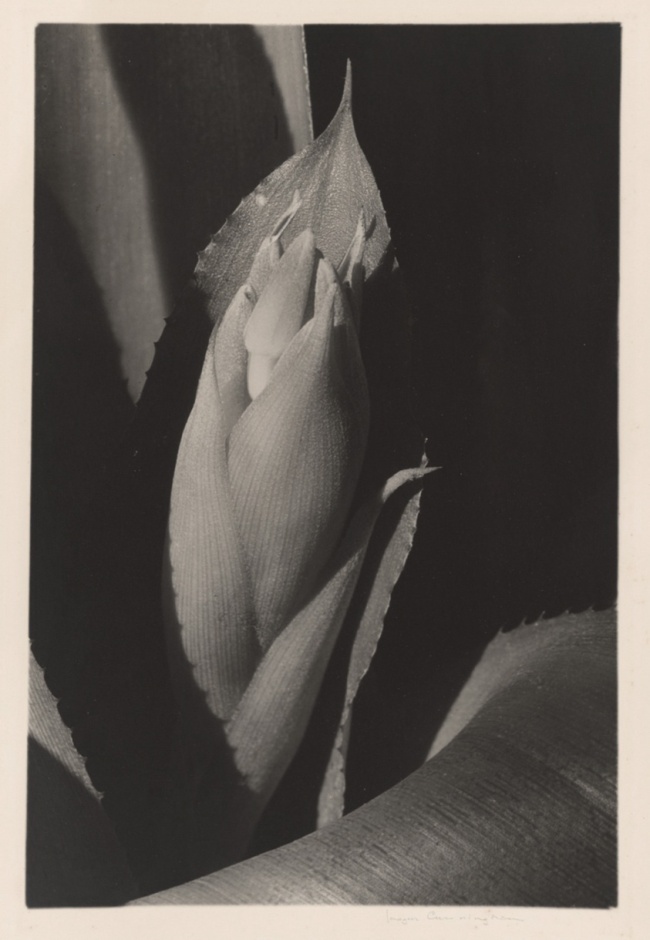


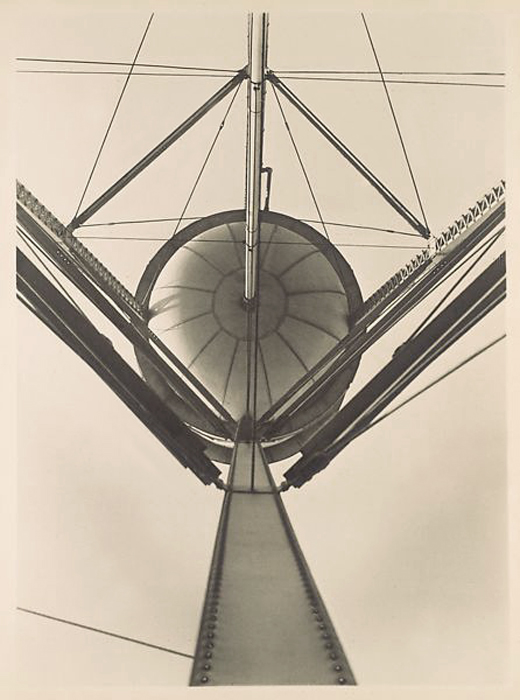

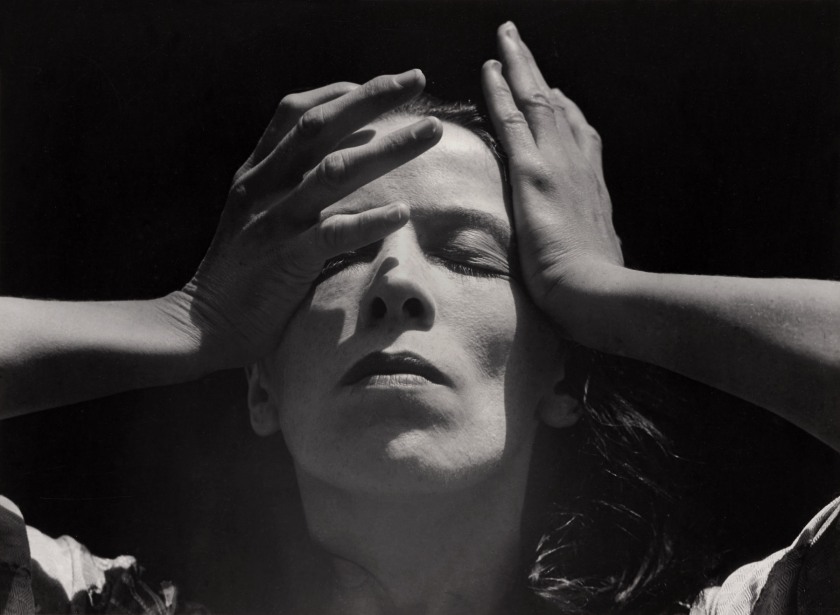




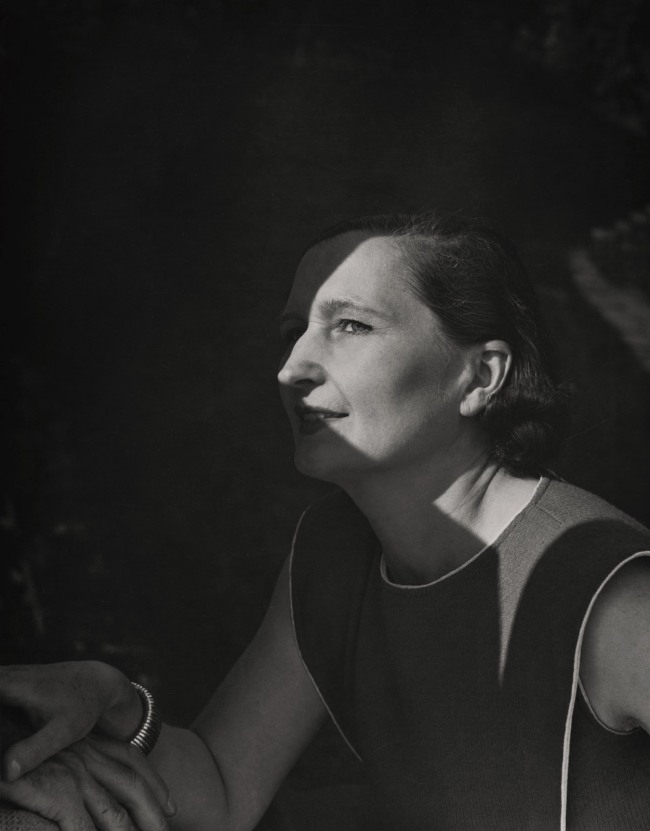
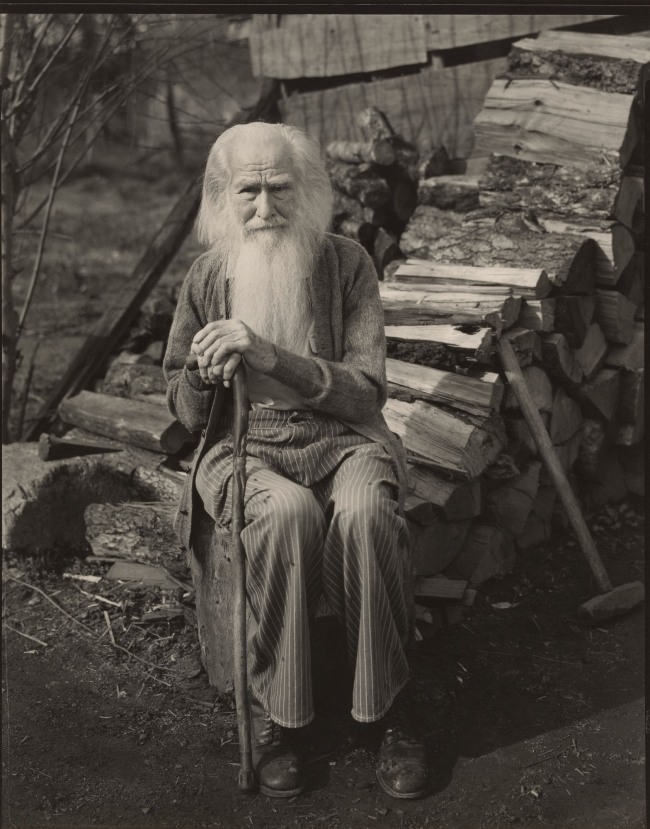

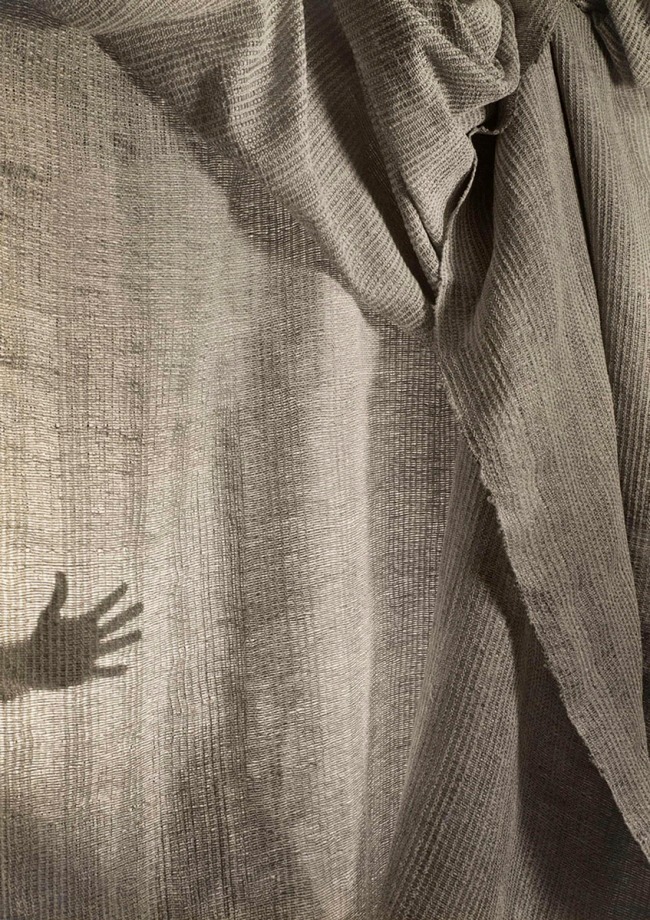

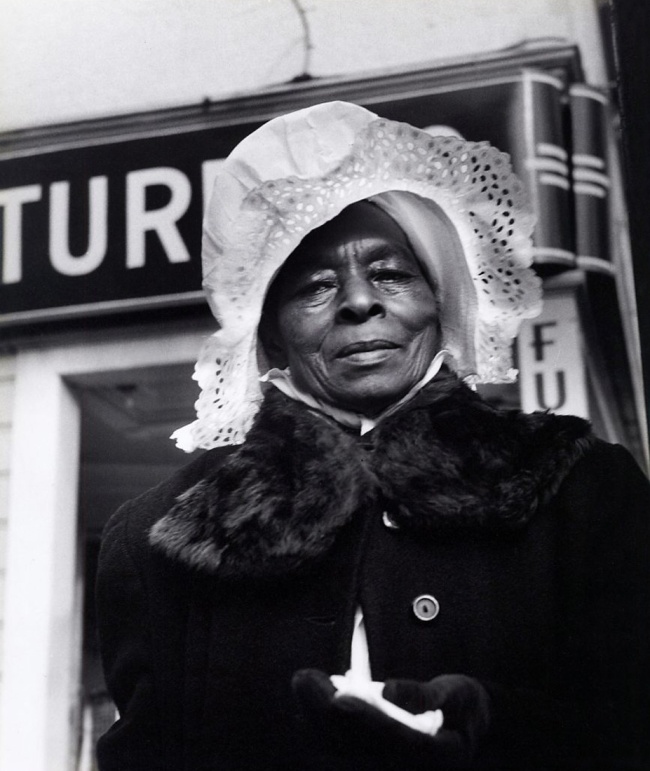
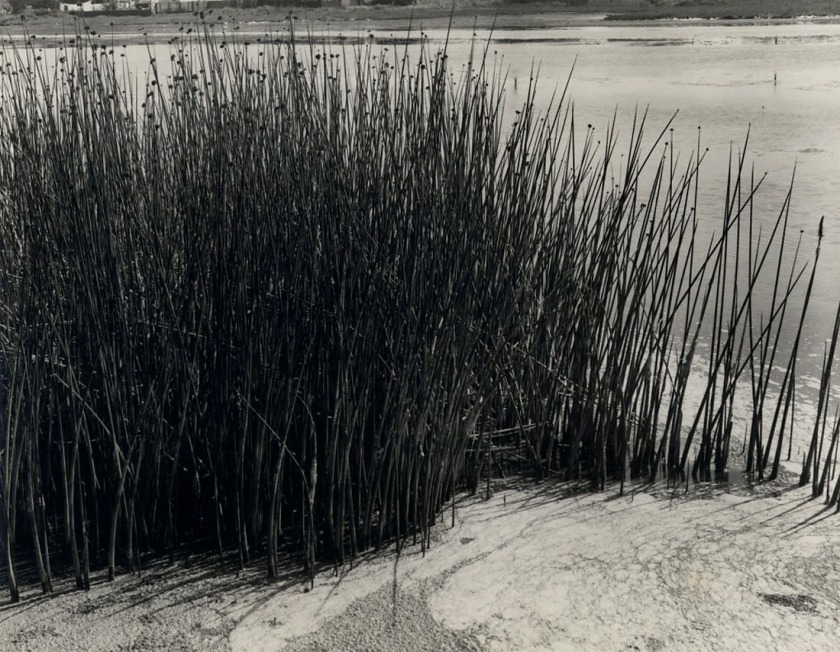




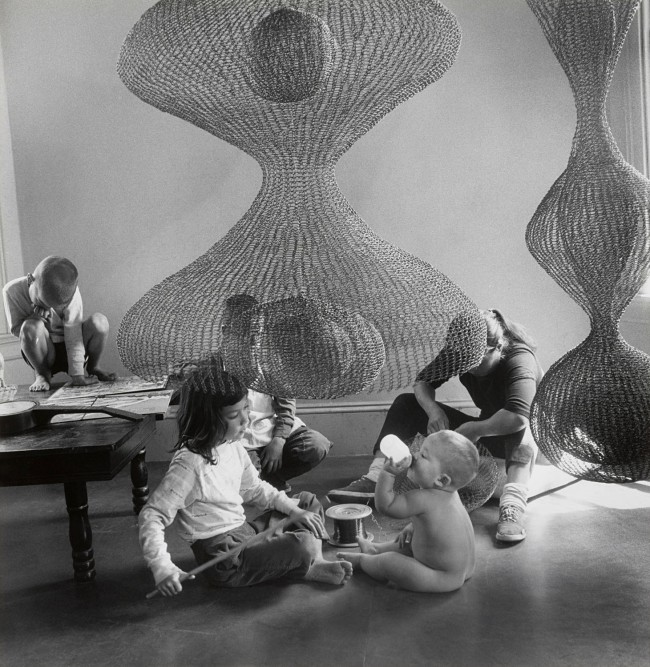

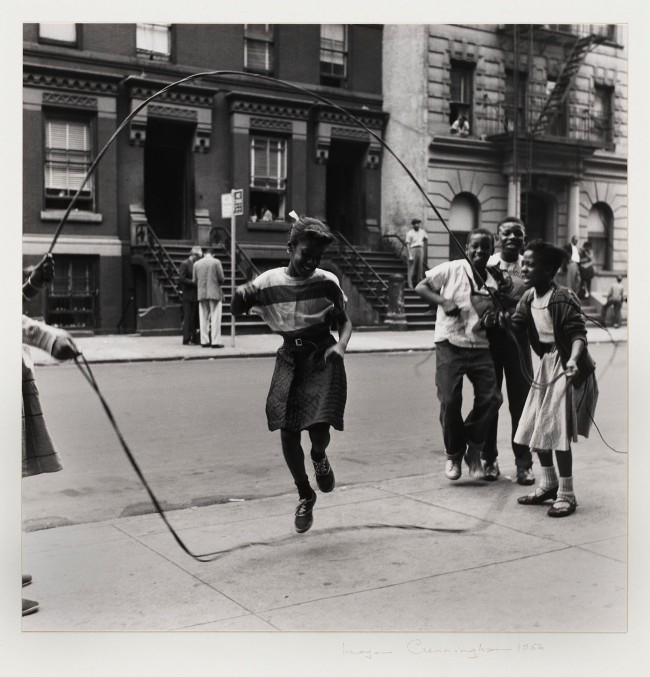



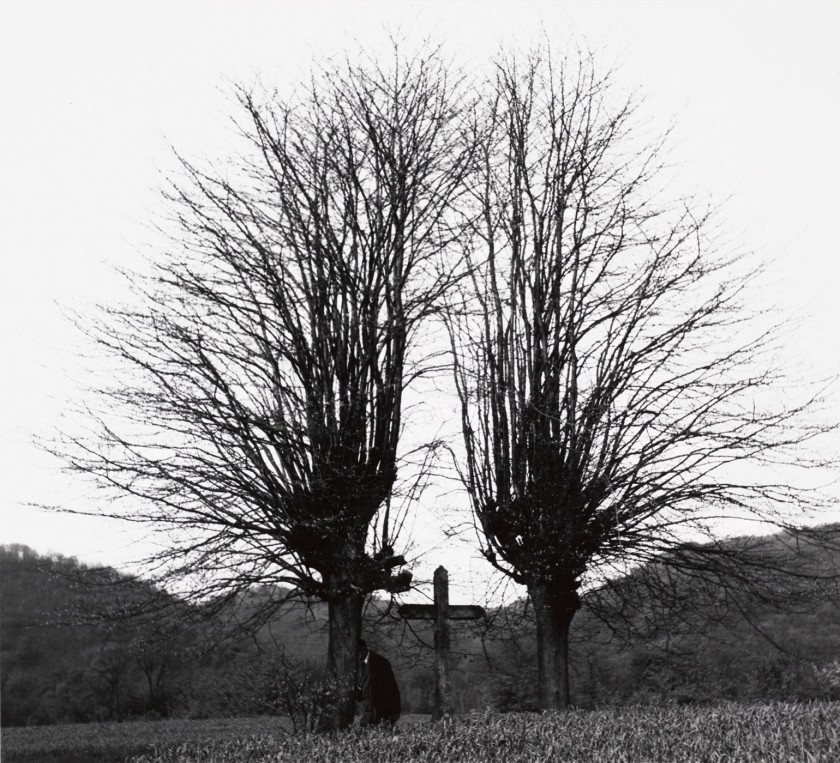

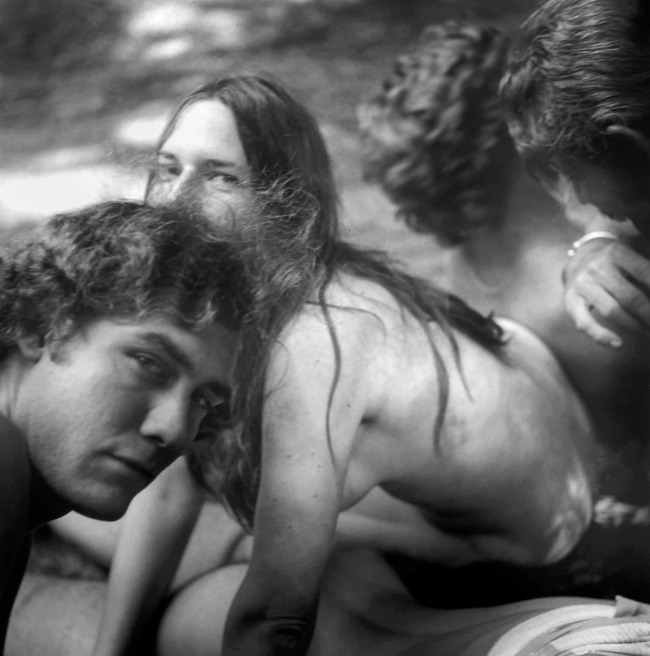
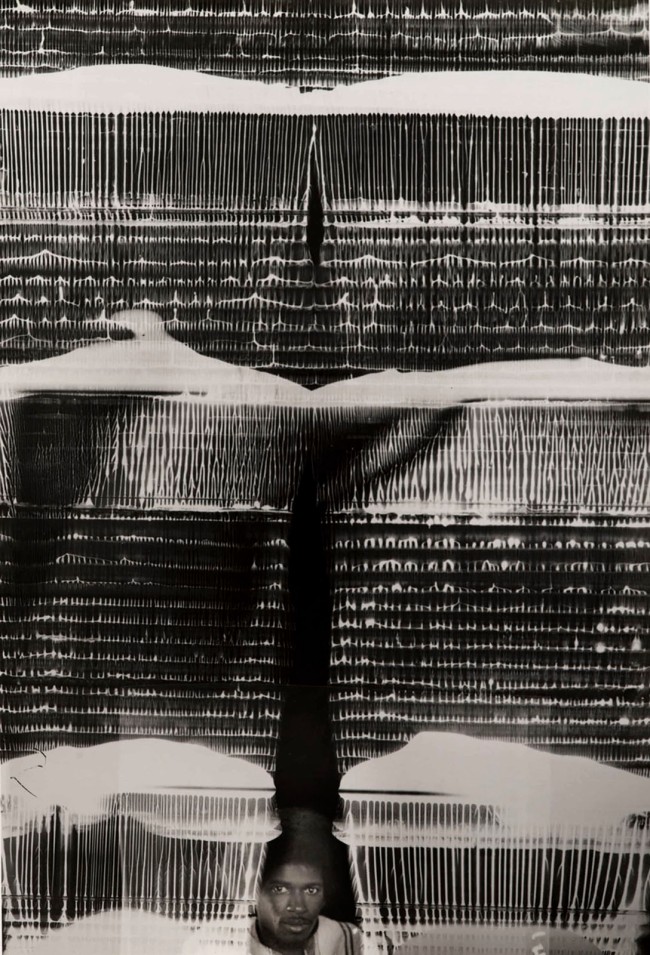
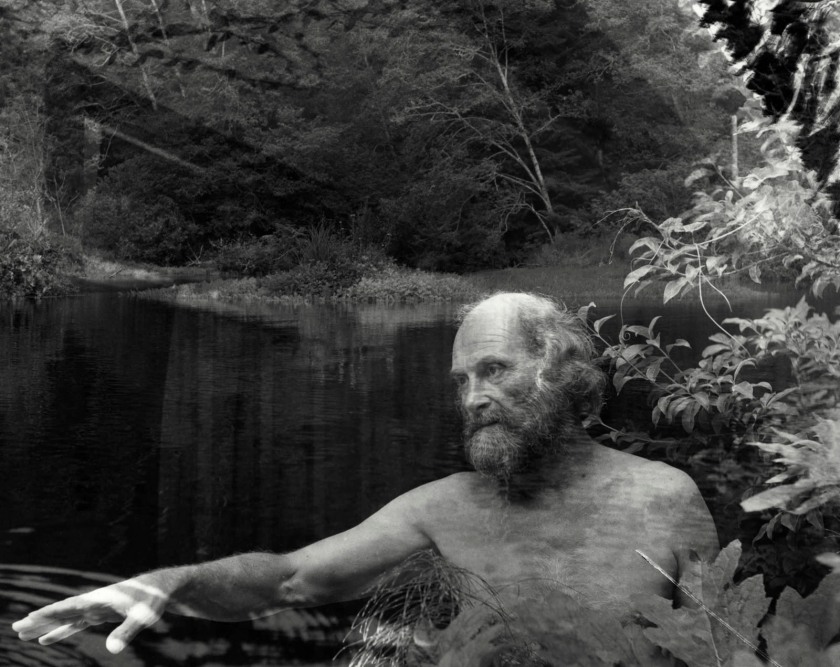
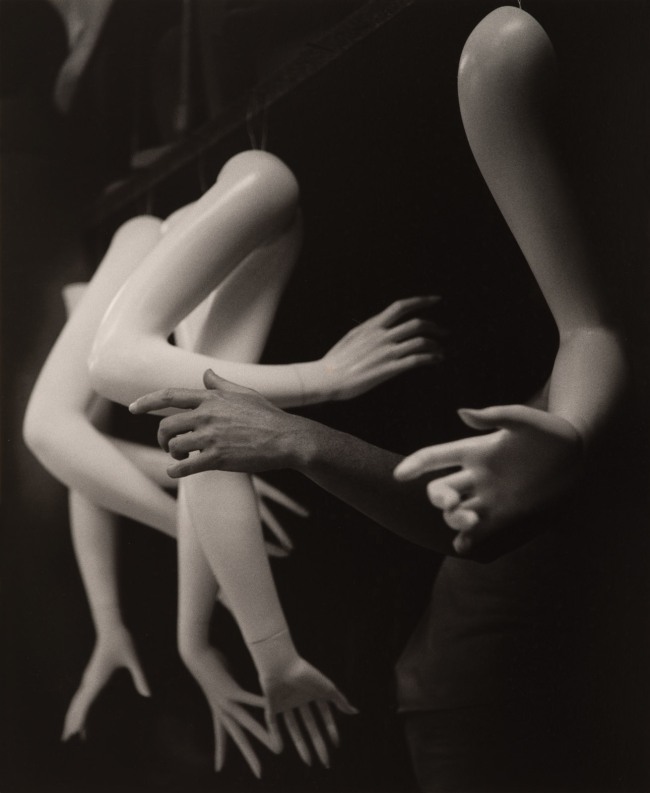

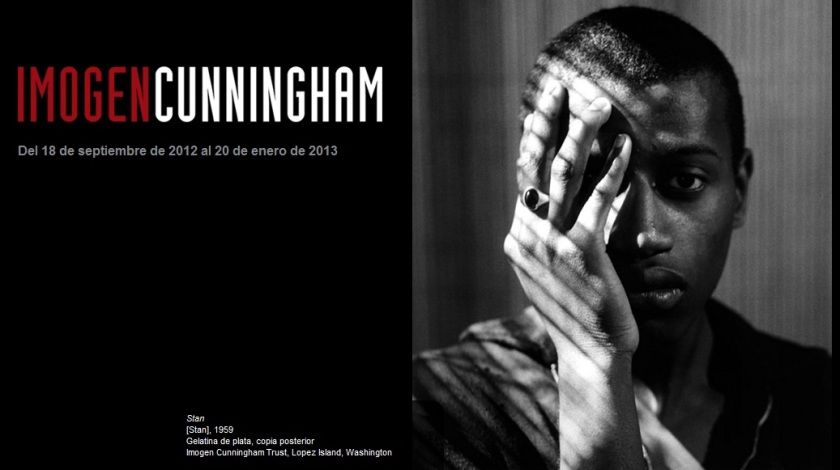
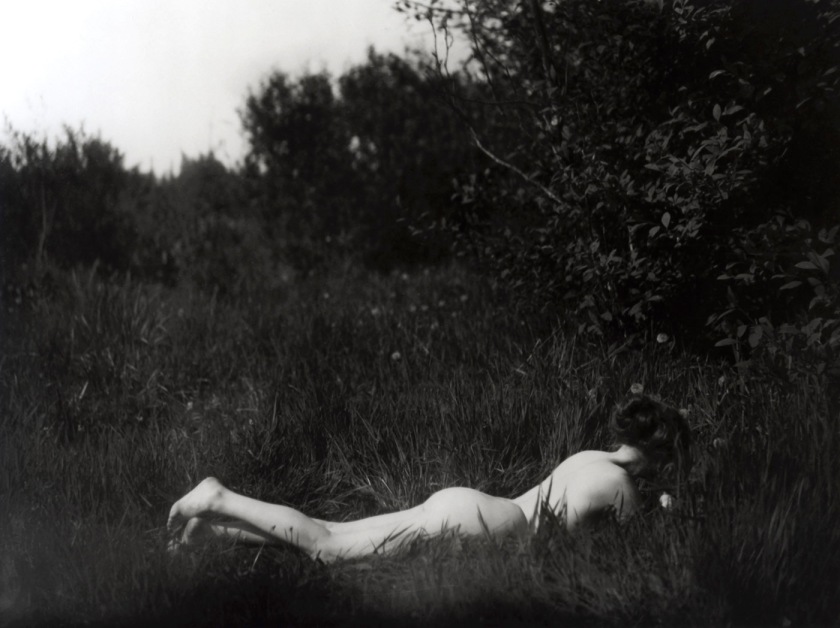
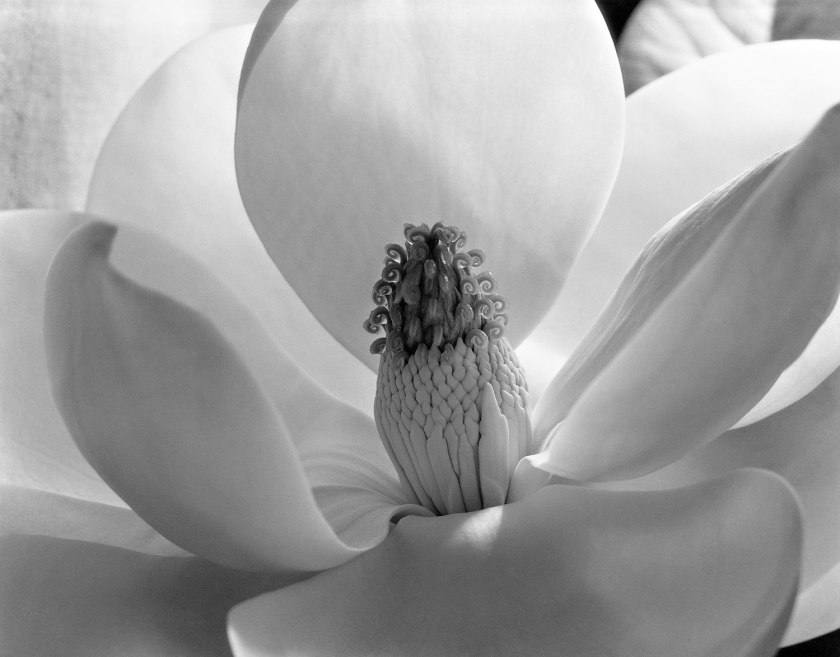
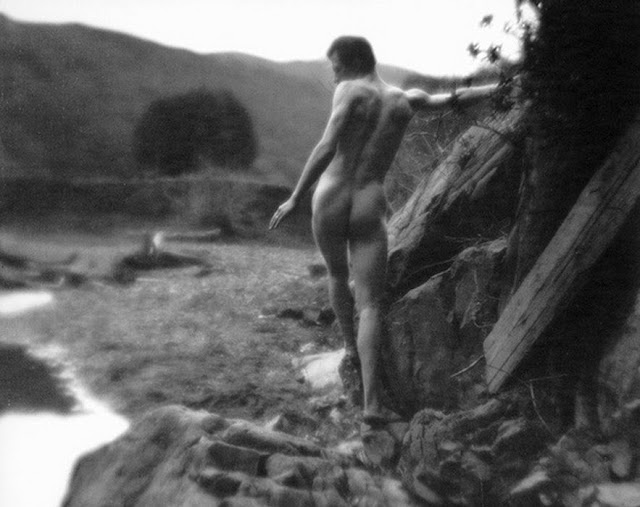
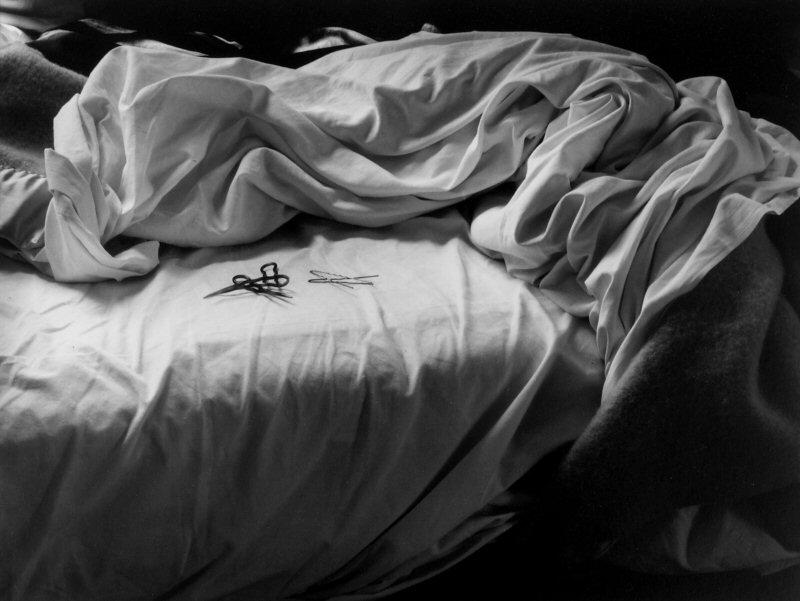
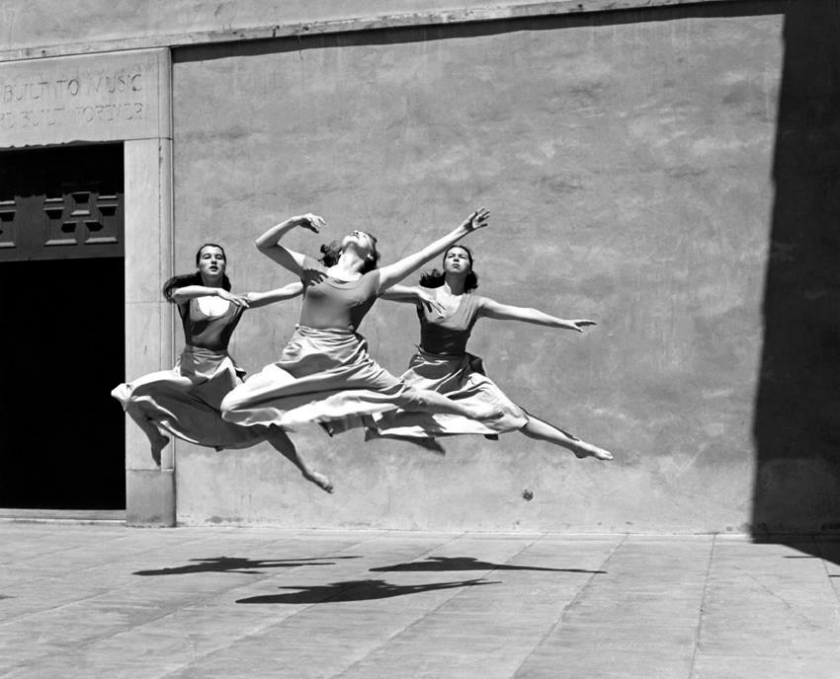
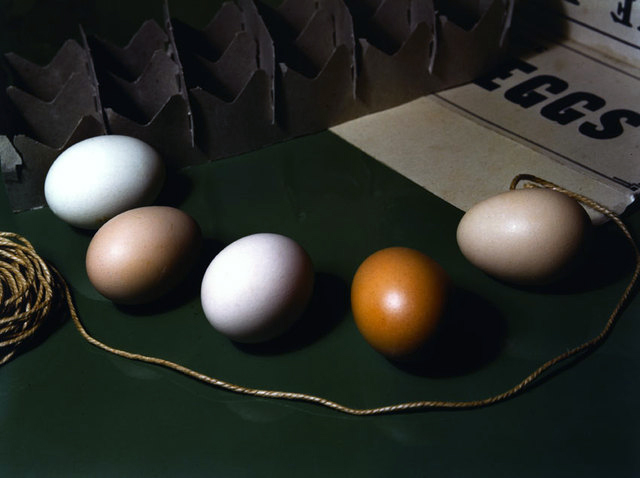

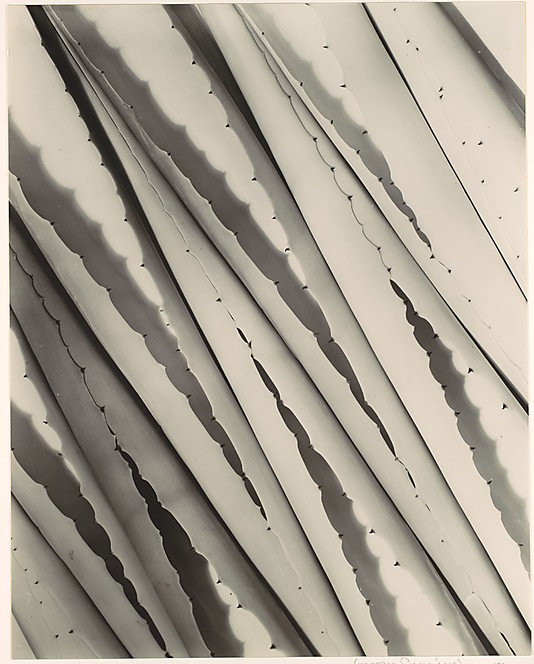

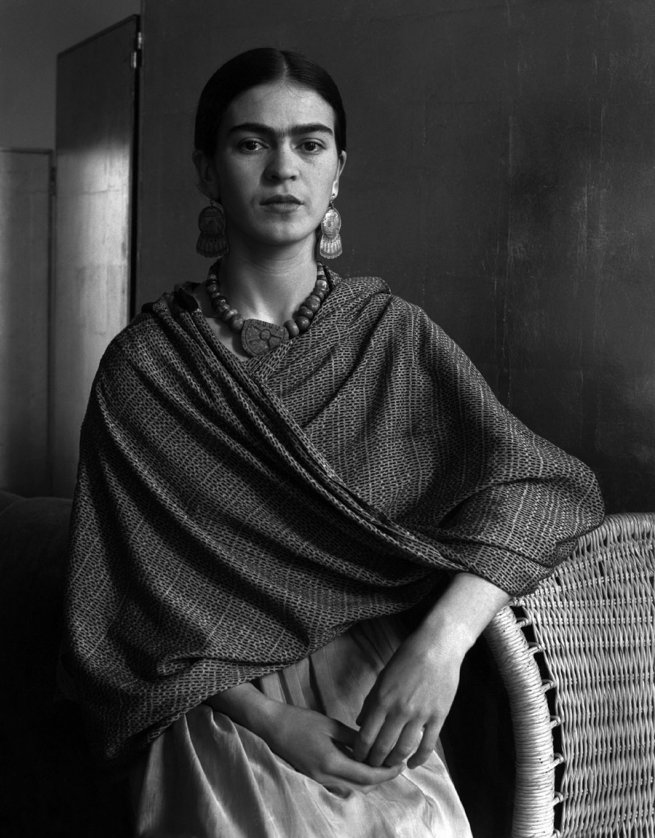

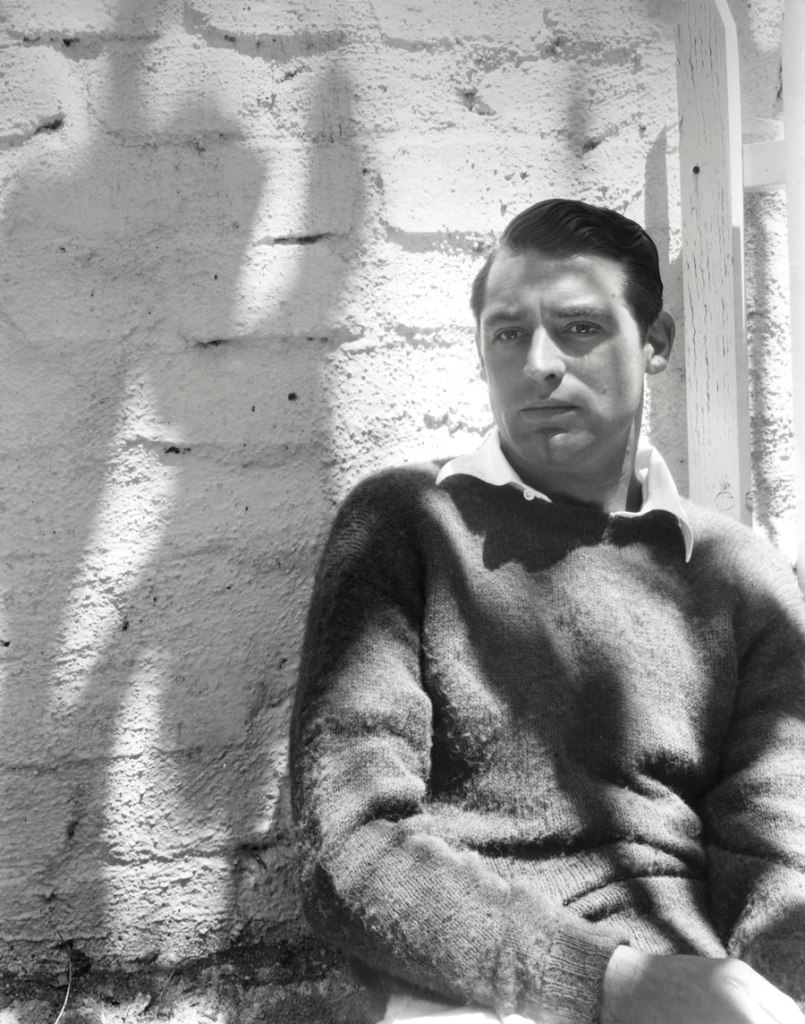






You must be logged in to post a comment.